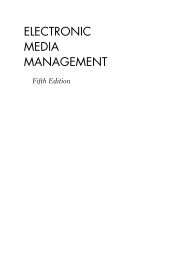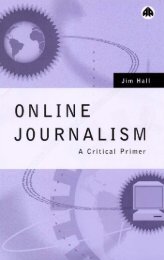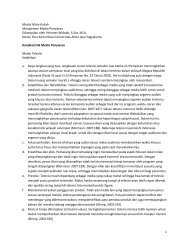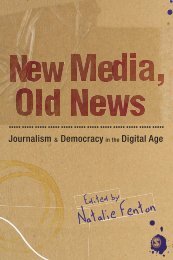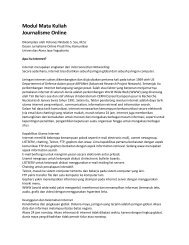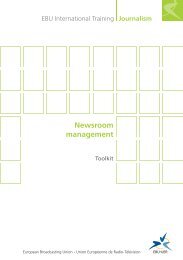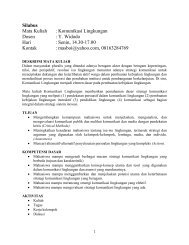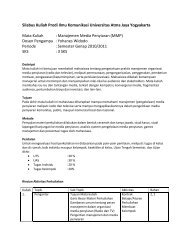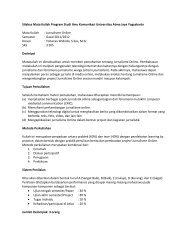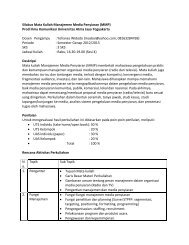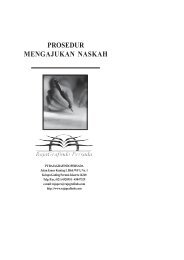1What is online journalism? - Ayo Menulis FISIP UAJY
1What is online journalism? - Ayo Menulis FISIP UAJY
1What is online journalism? - Ayo Menulis FISIP UAJY
Create successful ePaper yourself
Turn your PDF publications into a flip-book with our unique Google optimized e-Paper software.
206 Journal<strong>is</strong>m Online<br />
Ensure the whole package works within the <strong>online</strong> environment<br />
and seeing what your users think before going live.<br />
Interface and usability<br />
You must ensure that the whole package works within the<br />
<strong>online</strong> environment – see what your users think before going<br />
live.<br />
You may have settled on your chosen layout and filled it with<br />
content and navigation, but you still have some work to do. You<br />
need to be sure that it works, particularly within the interactive onscreen<br />
environment of the web. Steve Krug defines usability as<br />
making sure ‘that a person of average (or even below average)<br />
ability and experience can use the thing – whether it’s a web site,<br />
a fighter jet or a revolving door – for its intended purpose without<br />
getting hopelessly frustrated’.<br />
Krug’s first law of usability, indeed it <strong>is</strong> the title of h<strong>is</strong> book on<br />
the subject, <strong>is</strong> ‘Don’t make me think.’ He believes that a web site<br />
should be self-evident (i.e. it should be immediately obvious what<br />
it <strong>is</strong> and how to use it) or at least self-explanatory (i.e. just<br />
requiring a little thought to work it out). Th<strong>is</strong> <strong>is</strong> because users<br />
scan web pages, choose the first reasonable option they see and<br />
usually muddle through rather than working out just how the site<br />
works. Faced with th<strong>is</strong>, ‘if web pages are going to be effective,<br />
they have to work most of their magic at a glance’.<br />
Krug believes that anything that makes people think adds to<br />
their ‘cognitive workload’ and increases the ‘mental chatter’. The<br />
sort of things that make users think include:<br />
ambiguous names for sections or functions;<br />
links and buttons that are not obviously clickable;<br />
confusing options for utilities such as search engines; and<br />
poor navigation.<br />
The answer <strong>is</strong> to consider these and other <strong>is</strong>sues from the outset<br />
but also to user test your site. Designers lose perspective. Users<br />
give it back.



